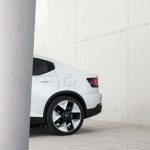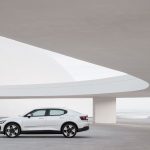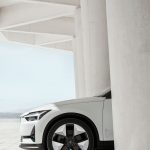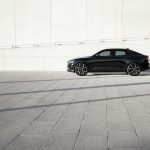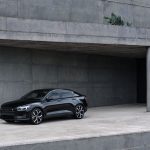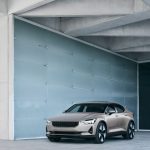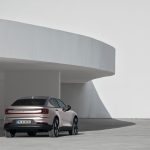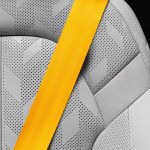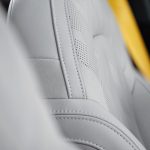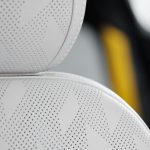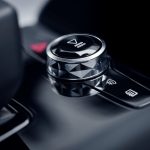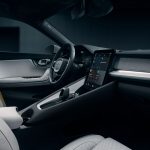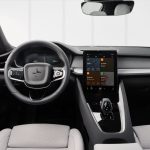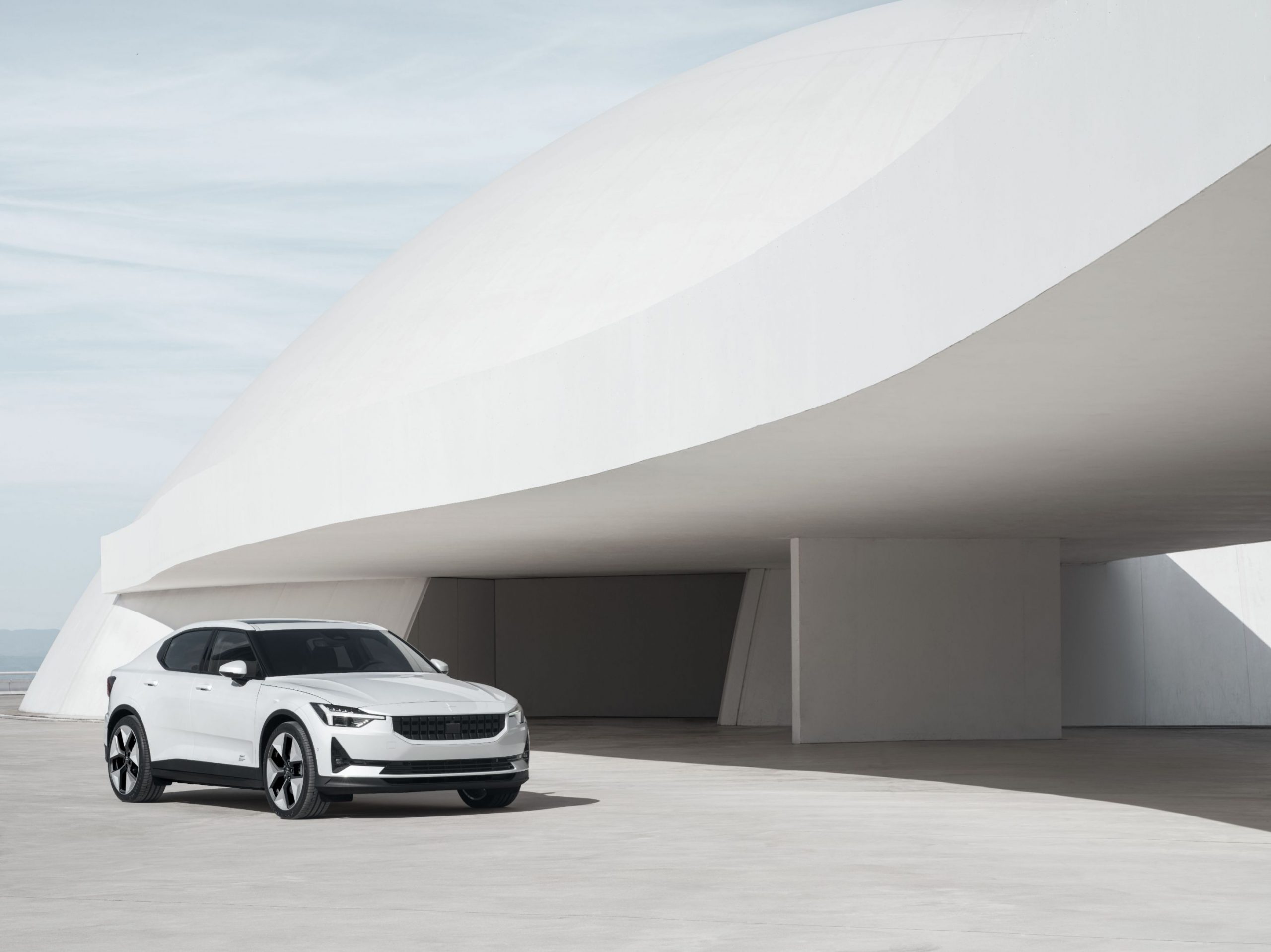
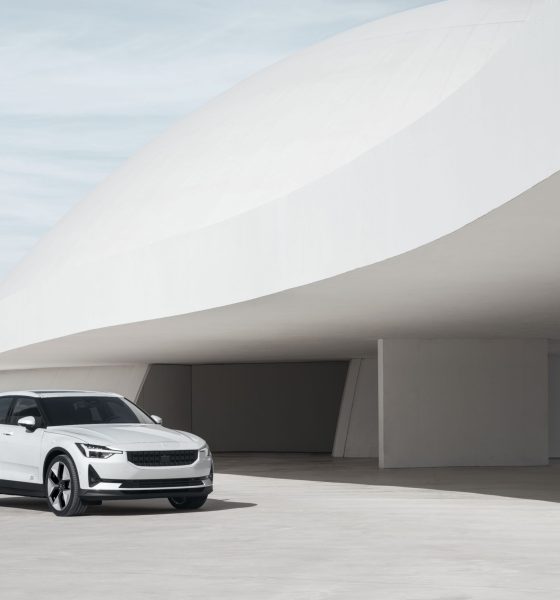
News
Polestar 2 gets a fresh design with sustainability and ethical sourcing in focus
Polestar announced today that its award-winning electric vehicle, the Polestar 2, is receiving sustainability and design updates to minimize climate impact and increase material sourcing transparency as ethical sourcing remains a primary focus of the Swedish automaker.
The Polestar 2 is receiving design updates to its interior, as well as new colors and wheel options for drivers to choose from when ordering the all-electric vehicle. Additionally, numerous improvements to vehicle range ratings will be applied to future builds of the Polestar 2 thanks to the expansion of blockchain traceability for ethical mining practices and a reduced carbon footprint due to the use of renewable energy.
“We have revisited the materials and processes that go into making Polestar 2, introducing updates that reduce climate impact and increase the material traceability of this award-winning car,” Polestar CEO Thomas Ingenlath said. “These are important additions to how we can improve cars over their lifetime – not just with functionality and design updates but addressing sustainability and carbon footprint as well.”
The most crucial improvement to the Polestar 2 is to its batteries, thanks to a partnership with traceability leader Circulor, which now includes blockchain accountability for mica in addition to cobalt, “both of which are critical battery components of an electric car,” the automaker said. The use of blockchain technology allows Polestar to trace where its battery materials and risk materials are sourced from, ensuring they are obtained through ethical mining and manufacturing processes. One of the key arguments against the transition of electric vehicles has been how automakers and battery suppliers obtain the metals and materials necessary for the production of the cells.
Polestar 2 receives top marks in crash safety tests, living up to its Volvo roots
Companies have fought for years to alleviate the idea that EV batteries are not sustainable and that they are obtained in unethical ways. Tesla, for example, detailed in its most recent sustainability report that it uses a series of due diligence processes and randomized checks at its mines across the world to ensure the materials are mined and obtained with ethical practices.
The use of these blockchain accountability programs also translates to better emissions ratings in the Polestar 2, the company says, as the aluminum tray carrying the battery pack will reduce carbon emissions of 1,653 pounds (750 kilograms) per car. This was made possible by purchasing only the aluminum for the tray from suppliers that utilize renewable energy. A low-carbon aluminum is also being used in the Polestar 2’s wheels to increase sustainability metrics.
- Polestar 2’s new low-carbon aluminum wheels
- Polestar 2’s new low-carbon aluminum wheels
- Polestar 2’s new low-carbon aluminum wheels
“In our program updates, we want to take action on improvements that can make a positive sustainability impact quickly, rather than traditional mid-cycle facelifts,” Polestar Head of Sustainability Fredrika Klarén said. “Product optimization programs are common in the car industry, but we are taking an extended approach at Polestar, combining these with CO2e reduction programs as well. A first pilot has been rolled out, replacing the aluminum in the wheels with low-carbon aluminum that is produced using renewable energy. We expect this to result in a 1,322lb (600 kg) CO2e reduction per car for Polestar 2 in the second half of the year. Together with the improvements to aluminum in the battery tray, we’re expecting to see a total reduction of around 2,976lbs (1,350kg) per car.”
Other improvements, like the use of cruelty-free interior materials, are being added. Polestar parent company Volvo announced that it would use “vegan” leather in all of its EVs, starting with the C40 Recharge. The Polestar 2 will also have two new exterior colors, Space (Metallic Black) and Jupiter (Gold-Grey with Red Flake).
- Polestar 2 in “Space”
- Polestar 2 in “Space”
- Polestar 2 in “Jupiter”
- Polestar 2 in “Jupiter”
Here are each of the changes that will be applied to the Polestar 2:
- New exterior colors: Space (metallic black) and Jupiter (gold-grey with red flake)
- New designs for the standard 19-inch and optional 20-inch wheels
- New Zinc grey color for ventilated Nappa leather upholstery, available with a new Light Ash deco trim
- Removable sunshade for the panoramic glass roof (also available as an accessory for all Polestar 2 with glass roof)
- The mechanical heat pump (included in Plus Pack) has an improved optimal temperature range, now between 20°F and 77°F (-7°C and 25°C), increasing real-world vehicle range in adverse conditions.
- Introduction of an advanced cabin filter and upgraded interior particulate matter sensor with new in-car app that quantifies exterior air quality improvement in the cabin
- Polestar 2’s new cruelty-free interiors will be included on the updated version of the vehicle
- Polestar 2’s new cruelty-free interiors will be included on the updated version of the vehicle
- Polestar 2’s new cruelty-free interiors will be included on the updated version of the vehicle
- Polestar 2’s new cruelty-free interiors will be included on the updated version of the vehicle
- Polestar 2’s new cruelty-free interiors will be included on the updated version of the vehicle
- Polestar 2’s new cruelty-free interiors will be included on the updated version of the vehicle
Pricing, updated range ratings, and availability for the North American market will be announced in the coming weeks, Polestar said.
I’d love to hear from you! If you have any comments, concerns, or questions, please email me at joey@teslarati.com. You can also reach me on Twitter @KlenderJoey, or if you have news tips, you can email us at tips@teslarati.com.

News
Tesla discloses interesting collaboration partner for Supercharging
This BOXABL collaboration would be a great way to add a rest stop to a rural Supercharging location, and could lead to more of these chargers across the U.S.
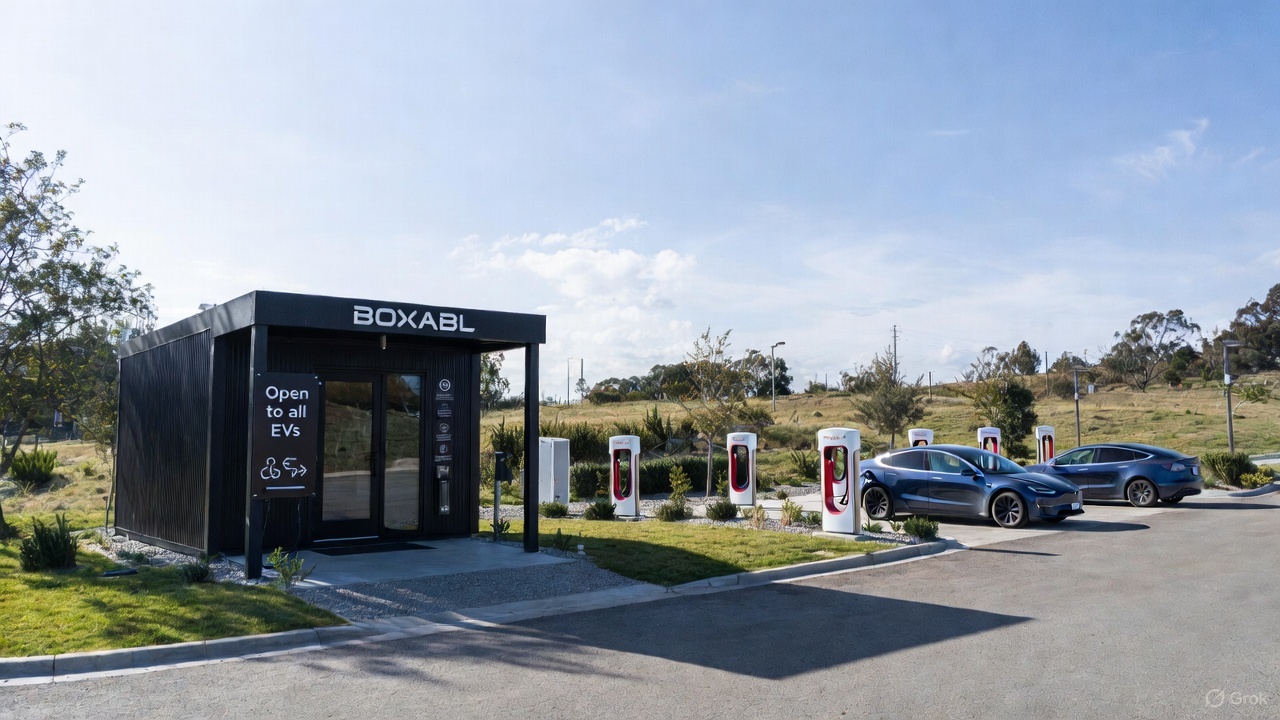
Tesla disclosed an interesting collaboration partner in an SEC filing, which looks like an indication of a potential project at Supercharger sites.
Tesla said on Tuesday in the filing that it was entering an agreement with BOXABL to design and build a Micromenity structure. Simply put, this is a modular building, usually a few hundred square feet in size, and it has been seen at Superchargers in Europe.
In Magnant, France, Tesla opened a small building at a Supercharger that is available to all EV owners. There are snacks and drinks inside, including ice cream, coffee, a gaming console, and restrooms. It gives people an opportunity to get up and out of their cars while charging.
This building was not built by BOXABL, but instead by bk World Lounges. It is likely the final Supercharging stop before people get to Paris, as it is located 250 kilometers, or 155 miles, from the City of Light.
Voir cette publication sur Instagram
Magnant has 56 stalls, so it is a large Supercharging stop compared to most. The building could be a sign of things to come, especially as Tesla has opened up larger Supercharger stations along major roadways.
It is for just a single building, as the Scope of Work within the filing states “a comprehensive package for one Micromenity building.”
NEWS: BOXABL, a company that creates modular, prefabricated buildings, has entered into an agreement with @Tesla.
This is Tesla formally contracting BOXABL to design, engineer, and build a pilot “Micromenity” structure, a compact, modular building unit.
While some info in the… pic.twitter.com/RabJczGpEp
— Sawyer Merritt (@SawyerMerritt) December 9, 2025
Superchargers are commonly located at gas stations, shopping centers, and other major points of interest. However, there are some stops that are isolated from retail or entertainment.
This BOXABL collaboration would be a great way to add a rest stop to a rural Supercharging location, and could lead to more of these chargers across the U.S.
Tesla has done a lot of really great things for Supercharging this year.
Along with widespread expansion, the company launched the “Charging Passport” this week, opened the largest Supercharger in the world in Lost Hills, California, with 168 chargers, opened the Tesla Diner, a drive-in movie restaurant in Los Angeles, and initiated access to the infrastructure to even more automakers.
Elon Musk
Tesla CEO Elon Musk confirms Robotaxi safety monitor removal in Austin: here’s when
Musk has made the claim about removing Safety Monitors from Tesla Robotaxi vehicles in Austin three times this year, once in September, once in October, and once in November.

Tesla CEO Elon Musk confirmed on Tuesday at the xAI Hackathon that the company would be removing Safety Monitors from Robotaxis in Austin in just three weeks.
This would meet Musk’s timeline from earlier this year, as he has said on several occasions that Tesla Robotaxis would have no supervision in Austin by the end of 2025.
On Tuesday, Musk said:
“Unsupervised is pretty much solved at this point. So there will be Tesla Robotaxis operating in Austin with no one in them. Not even anyone in the passenger seat in about three weeks.”
Musk has made the claim about removing Safety Monitors from Tesla Robotaxi vehicles in Austin three times this year, once in September, once in October, and once in November.
In September, he said:
“Should be no safety driver by end of year.”
The safety driver is just there for the first few months to be extra safe.
Should be no safety driver by end of year.
— Elon Musk (@elonmusk) September 4, 2025
On the Q3 Earnings Call in October, he said:
“We are expecting ot have no safety drivers in at least large parts of Austin by the end of this year.”
Finally, in November, he reiterated the timeline in a public statement at the Shareholder Meeting:
“I expect Robotaxis to operate without safety drivers in large parts of Austin this year.”
Currently, Tesla uses Safety Monitors in Austin in the passenger’s seat on local roads. They will sit in the driver’s seat for highway routes. In the Bay Area ride-hailing operation, there is always a Safety Monitor in the driver’s seat.
Three weeks would deliver on the end-of-year promise, cutting it close, beating it by just two days. However, it would be a tremendous leap forward in the Robotaxi program, and would shut the mouths of many skeptics who state the current iteration is no different than having an Uber.
Tesla has also expanded its Robotaxi fleet this year, but the company has not given exact figures. Once it expands its fleet, even more progress will be made in Tesla’s self-driving efforts.
News
SpaceX reportedly mulling IPO, eyeing largest of all time: report
“I do want to try to figure out some way for Tesla shareholders to participate in SpaceX. I’ve been giving a lot of thought to how to give people access to SpaceX stock,” Musk said.
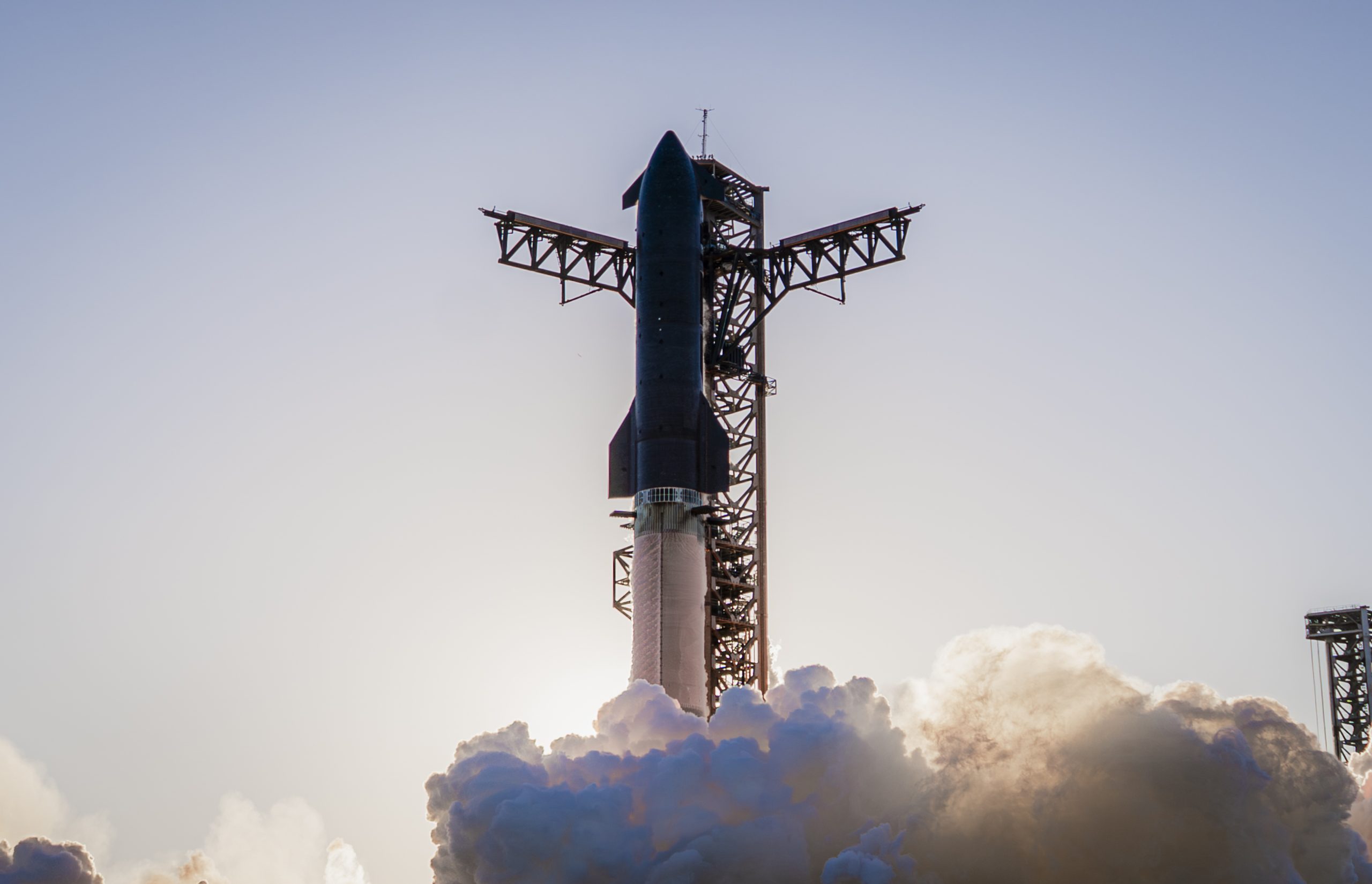
SpaceX is reportedly mulling an initial public offering, eyeing what would be the largest valuation at the time of availability of all time, a new report from Bloomberg said on Tuesday.
It is one of many reports involving one of Elon Musk’s companies and a massive market move, as this is not the first time we have seen reports of an IPO by SpaceX. Musk himself has also dispelled other reports in the past of a similar nature, including an xAI funding round.
SpaceX and Musk have yet to comment on the report. In the past, untrue reports were promptly replied to by the CEO; this has not yet gained any response, which is a good sign in terms of credibility.
However, he said just a few days ago that stories of this nature are inaccurate:
“There has been a lot of press claiming SpaceX is raising money at $800B, which is not accurate. SpaceX has been cash flow positive for many years and does periodic stock buybacks twice a year to provide liquidity for employees and investors. Valuation increments are a function of progress with Starship and Starlink and securing global direct-to-cell spectrum that greatly increases our addressable market. And one other thing that is arguably most significant by far.”
There has been a lot of press claiming @SpaceX is raising money at $800B, which is not accurate.
SpaceX has been cash flow positive for many years and does periodic stock buybacks twice a year to provide liquidity for employees and investors.
Valuation increments are a…
— Elon Musk (@elonmusk) December 6, 2025
Musk has discussed a potential IPO for SpaceX in recent months, as the November 6 shareholder meeting, as he commented on the “downsides” of having a public company, like litigation exposure, quarterly reporting pressures, and other inconveniences.
Nevertheless, Musk has also said he wants there to be a way for Tesla shareholders to get in on the action. At the meeting in early November, he said:
“I do want to try to figure out some way for Tesla shareholders to participate in SpaceX. I’ve been giving a lot of thought to how to give people access to SpaceX stock.”
Additionally, he added:
“Maybe at some point., SpaceX should become a public company despite all the downsides of being public.”
Musk has been historically reluctant to take SpaceX public, at times stating it could become a barrier to colonizing Mars. That does not mean it will not happen.
Bloomberg’s report cites multiple unidentified sources who are familiar with the matter. They indicate to the publication that SpaceX wants to go public in mid-to-late 2026, and it wants to raise $30 billion at a valuation of around $1.5 trillion.
This is not the first time SpaceX has discussed an IPO; we reported on it nine years ago. We hope it is true, as the community has spoken for a long time about having access to SpaceX stock. Legendary investor Ron Baron is one of the lucky few to be a SpaceX investor, and said it, along with Tesla, is a “lifetime investment.”
Tesla bull Ron Baron reveals $100M SpaceX investment, sees 3-5x return on TSLA
The primary driver of SpaceX’s value is Starlink, the company’s satellite internet service. Starlink contributes 60-70 percent of SpaceX’s revenue, meaning it is the primary value engine. Launch services, like Falcon 9 contracts, and the development of Starship, also play supporting roles.
